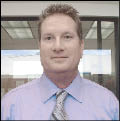 |
|
80,000 smiles: That’s how many youth were served last year by the city’s Out of School Time network.
Photo: Harlem RBI |
The growth of out-of-school-time (OST) programs over the past two decades has been steady, but rarely well-coordinated. A growing number of cities and states are working now to combine funding streams, technical assistance and even marketing to bring successful practices to scale.
“It’s always a challenge to take things to scale at a state and city level,” says Debra McLaughlin, managing partner of The Kunnusta Group, which has been a consultant to such efforts in Massachusetts. “Both [in terms of] how funding is parsed out, and how people break down the work, there are an incredible number of silos that need to be bridged.”
The most extensive bridges are being built in California (which has the nation’s largest state-funded effort), Massachusetts, Maine and Georgia, says Robert Stonehill, chief program officer at Washington-based Learning Point Associates. As for cities, Chicago, New York and Los Angeles are among the furthest along, says Stonehill, former director of the federal 21st Century Community Learning Centers (CLC) program.
Such efforts have to overcome several common challenges:
• Coordination is hindered by what McLaughlin terms “the false dichotomy between early care and education, and school-aged and older youth.” Programs tend to serve, and funding is often targeted to, those different age groups. “It’s the same kid who just gets older. It’s those things that plague the field,” she says.
• Because OST programs address a broad range of needs – from academic and cognitive to social and emotional – they often must deal with different government entities that focus on each of those needs. “That’s why it takes an outside force that scans all the pieces, figures out gaps, and [puts together] a strategic vision and action plan,” McLaughlin says.
• Efforts to coordinate and standardize services must take into account the different needs of different communities and the natural inclination for program autonomy. “You can’t push things down people’s throats. The communities have to want to do this,” says Joe Durlak, a professor at Loyola University in Chicago, who has studied after-school programming.
To see how a particular program fits in a network, Durlak notes, “You need to know who’s participating, what kind of programming, the developmental history of the participants … the kinds of activities they want to get involved in. … You need to know something about where the program is, the community context. Lastly, what kind of outcome are you interested in – academic achievement, cultural enrichment, arts and crafts, social development?
“Any effort that tries to take anything to scale needs to consider all this.”
Getting Started
The first thing that an OST network needs is a supporter with lots of money.
“Generally, what happens is that there is some type of outside force, a private funder like the Mott Foundation, that seeds these state after-school networks, where they require a match of state resources,” McLaughlin says.
Mott has the widest reach among foundations, funding after-school networks in 38 states.
The network coordinator, on the other hand, is a city or state agency. Among its tasks is coordinating funding from various streams: the CLC within the U.S. Department of Education and block grants to states from Temporary Assistance to Needy Families (TANF); private sources (Atlantic Philanthropies and the Wallace Foundation are also big players); and various parts of state and city budgets.
Increasingly, these government overseers are contracting with private intermediary groups to carry out much of the management, such as delivering funds to providers and monitoring their progress, and marketing the entire effort to the communities. The role of intermediaries in bringing together public and nonprofit agencies is helping to break down old barriers, Stonehill says. Their arrival “is something that’s kind of new and very exciting, in terms of a model for how you can move after-school to scale,” he says.
Growing to scale brings new challenges, however, such as finding both stable funding and qualified workers. “Where do you, in California, get 3,000 new directors of after-school programs, or thousands and thousands of new staff members?” Stonehill asks.
The American Youth Policy Forum, based in Washington, has been holding a series of discussions about building after-school capacity at the local, state and national levels. To find a summary of the sessions and reports about the issue, go to www.aypf.org and search for “capacity.”
Following are examples of states and cities that are working to take OST programming to scale.
California
Department of Education
(916) 319-0923
http://www.cde.ca.gov/ls/ba/as
The Strategy: California’s After School Education & Safety Program funds about 4,000 programs that bring together academics and various types of enrichment, including music, art and recreation. Most of the funding flows directly to schools, which subcontract to nonprofits, typically with a stipulation that the programming should complement the youths’ school work.
Getting Started: Proposition 49, the After School Education and Safety Act, mandates increases in after-school spending when government revenues hit certain marks. It was passed in 2002 and revised in 2006 to increase funding and streamline applications.
Getting It Together: The California After-School Network, an intermediary funded through the Mott Foundation, serves as a hub through which providers can network and share their best practices. Its activities include a weekly listserv “filled with information for all the sites, so they can go to one place to get best-practices information, policy updates, current research,” says Andee Press Dawson, executive director of the network, which is housed at University of California-Davis.
 |
|
Amick: Organization provides technical assistance and disseminates information.
|
The League of California After-School Providers also provides technical assistance and disseminates information, says Executive Director Steve Amick.
The funding increases have enabled the state to boost significantly technical assistance to programs, providing them with advice on such issues as program design, says John Malloy, administrator in the after-school program office.
Youth Served: The state reports that it has funded programs in more than 95 percent of elementary and middle schools in which at least half of the students qualify for free and reduced-price lunches. The state funds programs for up to 400,000 students in kindergarten through eighth grade, while federal CLC funds can serve about 36,000 high school students and 40,000 other K-8 students.
Staff: Of the approximately 20,000 staff members needed to run the after-school programs, about 16,000 have been hired since the new law passed. State law mandates one employee with at least an associate’s degree or equivalent for every 20 children enrolled.
Funding: Current annual funding is $550 million. While every school once received the same amount, $50,000, those in areas of high need now can get as much as $150,000. The state’s daily per-child rate has risen from $5 to $7.50, which has lowered the required local matching funds from one-half to one-third, according to Jennifer Peck, executive director of the Bay Area Partnership for Children and Youth.
Results: An evaluation by the William T. Grant Foundation, published last year, focused on the planning phase of Proposition 49. Where the state once looked primarily at test scores as a measure of success, it now focuses more on program attendance and increases in school-day attendance. “That’s an important statement about what we believe is important about after-school programs, and what we believe it’s reasonable to hold after-school programs accountable for,” Peck says.
Department of Human Resources
(404) 657-4651
http://www.afterschoolga.org
The Strategy: Georgia’s efforts hinge on the Georgia Afterschool Investment Council, a statewide convener that has begun to build a network of providers. Jill Riemer, executive director of the council, says it focuses on three areas: strengthening the state’s professional development infrastructure, handling policy development and advocacy, and raising awareness about the importance of after-school programs.
Quarterly meetings and an annual professional development institute bring people together, while trips to the state legislature help the push for funding. The council has 70 organizational members, from the nonprofit, public and private sectors.
“Throughout the year, we’ll be implementing a lot of advocacy strategies … so we can unify our voices and pull influential leaders around the table,” Riemer says. Network members “either influence those pots of money or want to influence those pots of money in greater ways, but it’s not just about influencing the money. … We’re also looking at the way money is currently being spent [and] igniting the conversation around, ‘Are we getting quality programs?’ ”
Getting Started: The council will boost networking, resource sharing and strategic alliances, predicts Malaika Mitchell, program officer with the state Department of Human Resources (DHR).
“It will take a long time to build this culture of continuous improvement, and then for the providers to understand that they’re part of this huge network, … that they’re not this isolated program,” Mitchell says. The council “can create the opportunity for that networking to begin. I’m hoping that, in the long run, it will become part of the culture of the after-school field.”
Putting It Together: Other issues to be settled include how to improve program quality and how to determine whether programs are successful, Mitchell says.
“Quality is not necessarily incentivized for out-of-school time programming the way it should be,” Riemer says. “Research says the single greatest factor is the expertise and skills of the adults in the program. That was enough for us to say, ‘This is where we’re going to put a stake in the ground.’ ”
DHR provided a seed grant last year to help launch the Georgia Afterschool Institute, a three-day statewide instructional academy that is aimed at after-school providers. The council is setting up regional networks of providers to continue peer-to-peer learning and connect them with regional training to help implement what they learn at the institute.
Youth Served: Georgia has 2 million school-aged children. Riemer says the structure of the council is too decentralized to know how many youth are served by its members.
Staff: The council does not yet have staff statistics.
Funding: Georgia receives $30 million per year in federal CLC funding and another $14 million from TANF that’s parceled out through the DHR. Lauren Lamb of United Way of Metro Atlanta says her agency spends up to $10 million a year on youth care, including after-school programs.
Results: The council has adopted the Afterschool Program Assessment System to measure youth outcomes. DHR, the Governor’s Office for Children and Families, and the United Way of Metropolitan Atlanta began a 15-site pilot project in July to see what is being achieved and which outcomes are difficult for the programs to influence.
New York City
Department of Youth and Community Development
(212) 442-6053
http://www.nyc.gov
The Strategy: New York’s city-funded and city-organized network of community-based agencies in high-need ZIP codes focuses on academic, career development, civic, personal and social activities.
Thanks to a memorandum of understanding, 10 city agencies have helped to find facilities and other resources. Public schools house about 65 percent of the programs, while other programs operate in facilities owned by the city’s housing, parks and juvenile justice agencies, as well as in homeless shelters.
Sixty-three percent of Out of School Time programs are in areas that have been targeted based on five factors: percentage of youth population, youth poverty rate, English language learners, and numbers of single parents and disconnected youth.
Getting Started: New York launched its OST initiative in 2005, basing it in the Department of Youth and Community Development. Previously, the city had funded inconsistent “one-shot encounters,” but now it tries to provide more ongoing offerings, says Jeanne Mullgrav, commissioner of youth and community development. Richard Berlin, executive director of the Harlem RBI program, says funding had flowed through 11 different city agencies but is now centralized. “It’s a big sea-change,” he says.
Putting It Together: “Getting buy-in from our providers was one challenge,” Mullgrav says.
To win some of that buy-in, the city has tried to build relationships with providers that focus on coaching and problem-solving. “Many programs struggle with, ‘How do you implement project-based learning? How do you [do] outreach to people who might not have confidence or trust in your program?’ ” Mullgrav notes.
 |
|
Jeanne Mullgrav
|
She says that the system includes regular meetings of executive directors and front-line workers that strive to get everyone on the same page, explain the direction and elicit feedback.
The city also provides ongoing staff training, through the Partnership for After School Education and The After School Corp., among others. (For an evaluation of after-school training in New York, see page 26.)
Youth Served: The city reports that the initiative served more than 80,000 youth through more than 600 programs in 2007-08.
Staff: About 70 percent of staff members citywide have college degrees, many as certified teachers or professional specialists such as artists or sports coaches, in part thanks to the city’s efforts to implement training programs to get them on track, Mullgrav says. Half the programs have high school students assisting, and one-third have college students assisting.
Funding: The city budgets $118 million for OTS. It receives $10 million from the state and $12 million from the Wallace Foundation for system-wide development. “The challenge now is, obviously, with the fiscal issues in New York, how out-of-school opportunities for youth are going to hold up when everything starts getting cut,” says Liz Reisner, principal with evaluation firm Policy Studies Associates.
Results: Policy Studies Associates is conducting an on-going longitudinal evaluation; findings from its second-year evaluation show that programs with the highest attendance rates had more high school- and college-age staff, actively marketed themselves to families, and provided at least some activities focused on academic enrichment and support.
Policy Studies Associates also recently looked at a New York college-based staff training program.



































